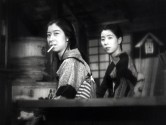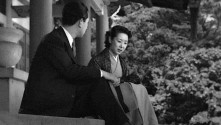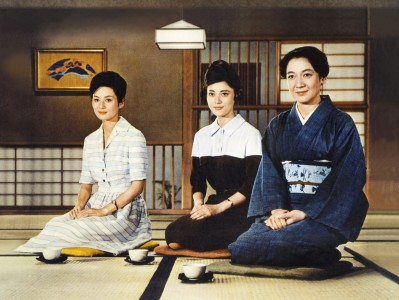
Shochiku studio head Shiro Kido’s affinity for warm and hopeful messages of salvation forced many filmmakers to be strategic in their depictions of despair. Ozu’s noir and gangster films reveal his own creative way of bending the rules, usually with an act of penance added to the final act. Based on an original story by Shimizu Hiroshi, Walk Cheerfully follows Takada Minoru’s gangster Kenji (a.k.a. Ken the Knife), whose feelings for office typist Yasue (Kawasaki Hiroko) inspire him to go straight. As Kenji tries to find another line of work and win over Yasue, his girlfriend Chieko (Date Satoko) retaliates with a scheme involving Yasue’s boss (Sakamoto Takeshi). The prevalence of Hollywood tropes and imagery in Walk Cheerfully is far more complex than it initially appears. Because the film actually shows very little criminal activity, the gangsters seem more like Hollywood aficionados and cinephiles (like Ozu himself) than threats to the social order. This makes Kenji’s repentant pursuit of a clean slate all the more shocking and excessive, generating a paradoxical criticism of the very stereotype—the Americanized gangster who spurns traditional values—the film depicts.
Part of film series
Screenings from this program
Late Spring

Tokyo Story

Early Summer

Passing Fancy

Dragnet Girl

Tokyo Story

A Story of Floating Weeds

Days of Youth

The Flavor of Green Tea over Rice

Early Spring

The Munekata Sisters

Floating Weeds

Good Morning

Late Autumn

Tokyo Twilight

The Brothers and Sisters of the Toda Family

I Flunked, But …

Late Autumn

Where Now Are the Dreams of Youth?

The End of Summer

Early Spring

Café Lumière

Tokyo Story





















